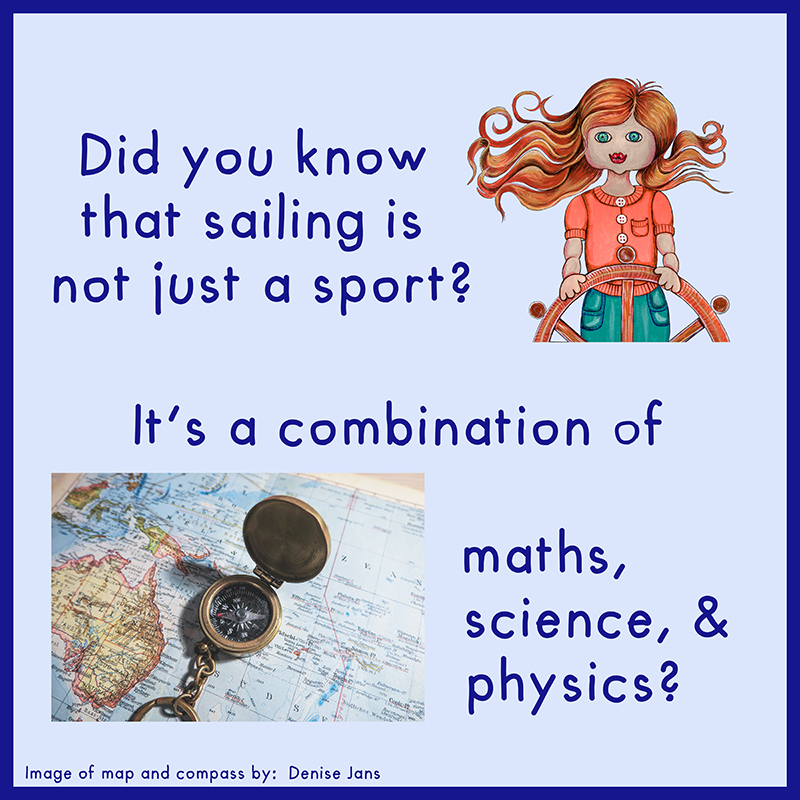Did you know that sailing is a combination of maths & science & physics?

Learning to sail isn’t just a matter of hopping into a boat and setting sail. More often than not, you would find yourself capsizing or in other crazy situations.
To be a good sailor, there are many things you must learn – and most of them are related to maths, science, or physics.
A late starter, I am still learning and trying to make my way through the Day Skipper Course, but not having a great mathematical brain hinders me to quite a degree. My husband, however, is brilliant in this area. Sailing since 13, to ensure he had all the knowledge he required for circumnavigating the world, he completed the Ocean Yachtmaster certificate.
The Science of Weather
Understanding the science of the weather is a must. Barometric pressure, clouds and wind are a forecaster of what is to come. Out at sea, there is no one close by to rescue you, so if you don’t get it right, you can find yourself in very sticky situations.
Barometers are most useful instruments. A rapid change of pressure is typically a herald of bad weather on the way.
Waves
Waves provide lots of information. How much white they have – no white, bits of white, lots of white – and their height tell you how strong the wind is. There is a chart called the Beaufort Scale that helps sailors learn to match wave appearance with the wind strength. Today, sailors generally use wind instruments to tell them the speed and direction of wind.
Reading a Compass
Understanding the reading of a compass, and using it, is maths at work. In tandem with the use of charts, this is how sailors navigate by a method called “dead reckoning” Today the advent of GPS has simplified chart work and increased accuracy. It’s how a sailor knows the direction in which they are heading.
Astral Navigation
For sailors who complete the Ocean Yachtmaster course – and I hope to get to that stage one day – learning astro-navigation is a major component. You don’t want to be without this if, for some unknow reason, GPS and satellites shut down. As sailors use celestial bodies to triangulate their position, this is the art of using maths and science at their best.
Mathematics at Work
Understanding the effects of tides, wind and waves also requires use of mathematics as a sailor works out the adjustments required to maintain course.
Sails and Boat
Then there is the mathematics and physics required to work out sail size and the science of understanding what weather conditions your boat is best suited for –
The list goes on and on…
An interesting website covering the areas of Navigation: https://sailingissues.com/navcourse4.html

